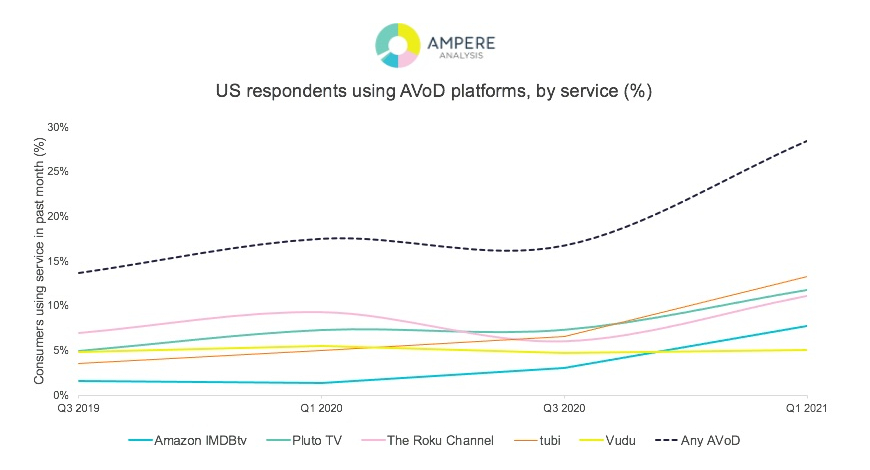Trends
Content exclusivity key differentiator between AVOD, SVOD

The analyst looked at the differing strategies between AVOD and SVOD services when it comes to exclusive content and says its study demonstrated the potential for AVOD services to co-exist with well-established subscription services and offer a cheaper way to view content online for price-sensitive consumers.
Ampere noted fundamentally that the quality and popularity of SVOD services is typically driven by their exclusive titles whereas AVOD services tend to rely on high volumes of non-exclusive content from major studios to bolster their quality perception of their catalogues.
US AVOD catalogues were typically large, primarily made up of older, non-exclusive titles. While SVOD services typically relied on their vast catalogue of exclusive titles to increase the quality and popularity of their content offering, this was not the case for AVOD services. The quality and popularity of AVOD catalogues was driven mainly by non-exclusive content, with their large catalogues made up of a much higher proportion of titles from studios which are also licensed to other services.
AVOD viewers also tended to be older and less affluent than their SVOD counterparts and tended not to stack multiple SVOD services, preferring traditional pay-TV packages. In the study, older users (age 55-64 years old) were the fastest growing age bracket of AVOD viewers, with a 7-percentage point increase in AVOD uptake among the group in the last year alone. This was also the fastest growing age bracket for SVOD but due to the greater maturity of the SVOD market, saw just a 3.5 percentage point growth in the last year.
Another key point revealed in the study was that all major SVOD services in the US offer some content that is available on AVOD for free. It noted that Amazon, Hulu and Peacock have a significant amount of content that is also available via AVOD services with a total of 12% of titles on SVOD are also available on a free AVOD platform in the US. However, Ampere added that a small number of platforms account for the majority of the overlap between SVOD and AVOD.
Amazon Prime Video was found to currently have the greatest overlap with Fox-owned AVOD service Tubi, with 6,600 titles shared between the two services; over 90% of these are lower-value movie content. This was followed by NBCU-backed Peacock, with 715 titles available free on Tubi, with the majority of these also available via Peacock’s free AVOD tier.
Looking ahead, Ampere observed that AVOD players were starting to move into original programming to differentiate their catalogues and reduce reliance on licensed content. It said Roku, Vudu, Crackle and IMDb TV have all begun to commission original programming, focusing primarily on documentary and comedy titles. Tubi has also committed to original productions, targeting 140 hours of new original content in late 2021.
Looking as to how he saw the market shaping over the coming years, Ampere analyst Tom Bell suggested AVOD services would need to compete more directly with the content on SVOD if they wanted to attract the younger, more affluent audience already familiar with subscription offers.
“As studios are reserving an increasing proportion of their content for their own platforms, AVOD platforms are beginning to follow suit and commission their own originals,” he remarked. “While content exclusivity remains a key difference in strategy between AVOD and SVOD platforms, these early moves into original commissioning bring AVOD players a step closer to increasing their catalogue exclusivity and quality and differentiating themselves in a crowded market.” Rapid TV News






You must be logged in to post a comment Login